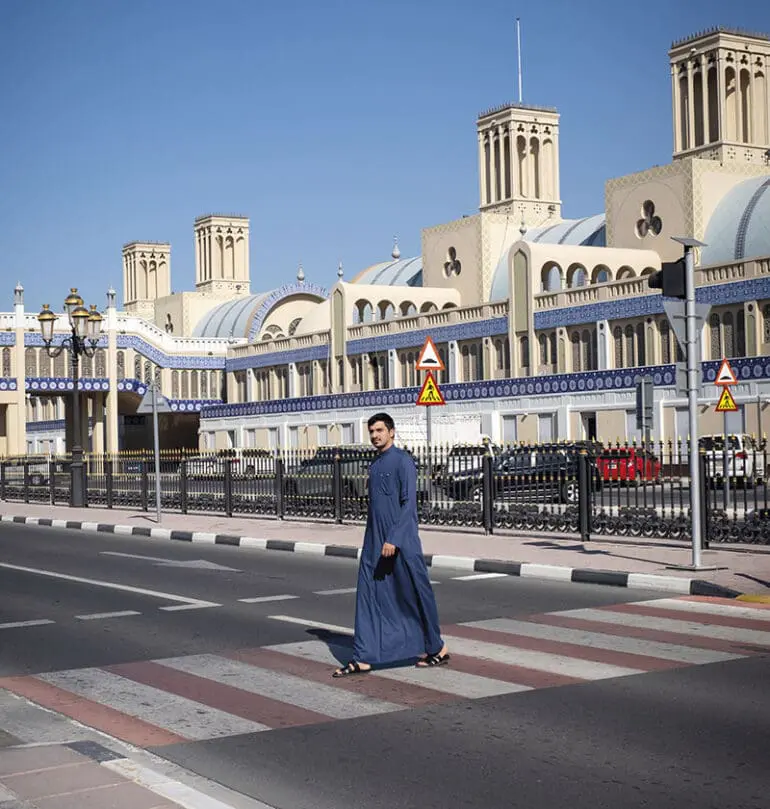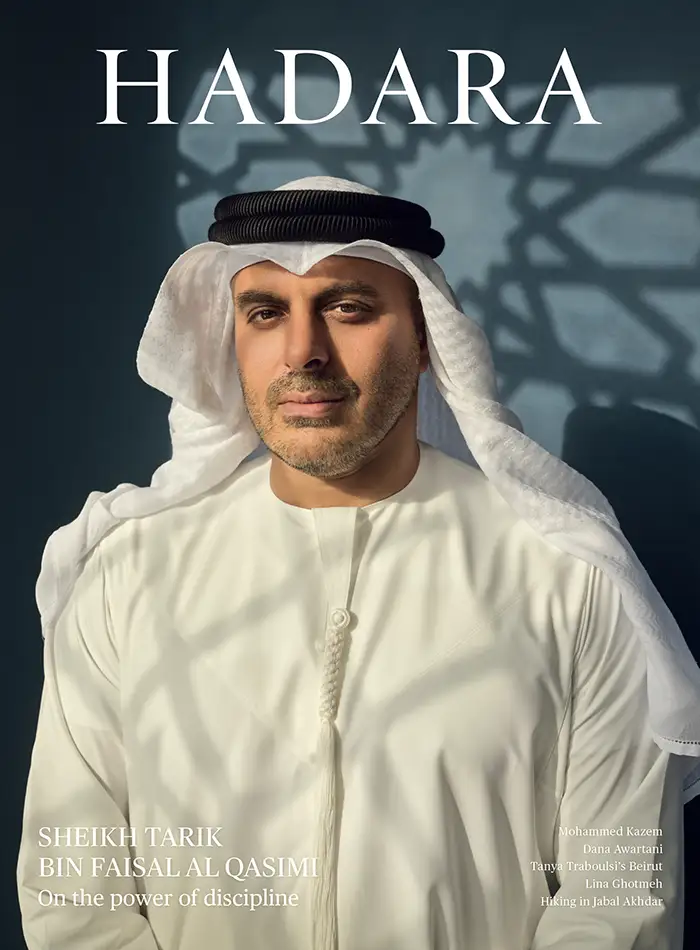The Grand Bazaar
A Sharjah landmark captivates architectural photographer Majid Al Bastaki.
By Catherine Mazy
“Everyone has a story in the Central Souk. My father and neighbours talk about how back in the ‘80s and ‘90s people went to the souk to buy DVDs and PlayStation games. It’s famous in the UAE. It was our first mall,” says Sharjah native Majid Al Bastaki, an architectural photographer whose work appeared at the Xposure International Photography Festival in 2022. He was the youngest photographer to exhibit his work at Xposure.
By then, Al Bastaki, a 22-year-old architectural engineering student who will graduate from the University of Sharjah in June, had already gone viral with a shot of the Central Souk matched up with an old five-dirham note—which also features the souk. “I took a photo of the dirham with the building lined up exactly. It exploded on Instagram,” he says. Since that photo, “friends and family tell me that when they pass the souk they think of me.”
Built in 1978 when the UAE was a young nation, the Central Souk sits on the shore of Khalid Lagoon, with two parallel, two-storey structures connected by two bridges. It houses some 600 shops, especially focused on carpets, electronics, antiques, fashion, gold and watches. “Tourists love it. Ladies go to buy gold items,” Al Bastaki says. “In the ‘80s and ‘90s, it was a place to see your neighbours.”
But Al Bastaki goes to admire the building itself, for its mix of Islamic and Emirati design. The architects, Michael Lyle & Partners of the UK, incorporated the vision laid out by His Highness Sheikh Dr. Sultan Bin Mohammed Al Qasimi, the Ruler of Sharjah. “His Highness created his own style,” Al Bastaki says. “You can see Islamic and Emirati arches, the symmetry, the barjeels. It’s our architecture. I take a picture every time I pass it.”
Al Bastaki often zooms in on small details that busy shoppers might not notice. The two long buildings are each divided in half, each part with its own interior colour scheme—orange, yellow, green and blue-gray—to subtly help people orient themselves amid its 80,000 square metres.
The squares connected to the barjeels are still visible inside, and the barjeels actually served their purpose of cooling the building when it was first built as a covered but open-air souk. In the 1990s, the buildings were enclosed for air conditioning, such that they now appear as two parallel structures, but the barjeels remain as a juxtaposition of Emirati architecture with the souk’s typically Islamic vaulted roofs.
An intertwined ivy motif is hand-painted just below the high windows, which in turn are covered by mashrabiya decorated with stylised vases of flowers, each design adapted to the height of the window. “It’s beautifully integrated,” Al Bastaki says. Even the barrel-vaulted roof is decorated—on the outside. Its pale blue tiles are punctuated with stripes of dark blue tiles that echo the geometric motif traditionally used on Bedouin tents.
“There are many small details that I don’t know if people notice,” he says. Al Bastaki gets close to them because he uses a drone for aerial photography. The Central Souk seen from above at night, when its lights make it seem to glow, is one of his favourite shots.
Al Bastaki also loves old photos. For Xposure, he collected more than 100 historical shots that he whittled down to 18. “I was very picky to choose photos that were never in the news or anywhere,” he says. He studied the sites carefully to determine the exact place and time (based on shadows) where the originals were taken, then he reshot them, contrasting old and new, sometimes in a single image. He considered the project a way to honour the 50th anniversary of His Highness’s rule. “You can see how Sharjah developed in the last 50 years, and how its architecture developed. It was my gift to His Highness for this anniversary,” he says.
Looking to the future, the soon-to-be-architect says, “I dream of having my own touches in Sharjah, like the Central Souk.”
Photograph by Natalie Naccache




